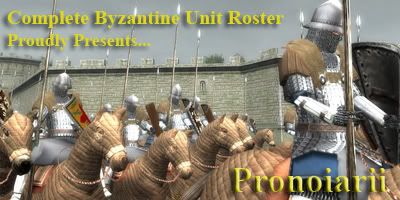Leo the Deacon makes some references to them breaking Russian cavalry in the war against Sviatoslav I.
Funny you should say that about not flinching; at the battle of Dyrrakhion in 1081, Alexios I was armoured as described above, a charge from 3 Norman knights struck home but none of the lances penetrated his armour, he was almost unhorsed but getting caught in his riding gear. A charge from another direction simply pushed him back into his saddle and he was able to escape the carnage.
That little snippet from the Alexiad was considered poetic license by earlier historians until modern tests demonstrated the truth of it.







 Reply With Quote
Reply With Quote





